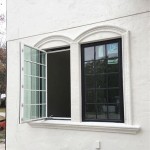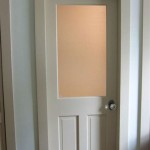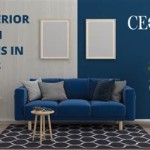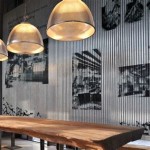Types of Accessories in Interior Design
Interior design is the art and science of enhancing the interior of a building to achieve a healthier and more aesthetically pleasing environment for the people using the space. It's a multifaceted profession that includes conceptual development, space planning, site inspections, programming, research, communicating with the stakeholders of a project, construction management, and execution of the design. A crucial, and often underestimated, aspect of this field is the selection and arrangement of accessories. These seemingly small details play a significant role in completing a space, adding personality, and enhancing its overall functionality and aesthetic appeal.
Accessories in interior design are items that are not structurally integral to the space, but are used to adorn, embellish, and personalize the environment. They contribute to the overall atmosphere and character of a room, allowing designers to translate a vision into a tangible reality. Accessories act as the finishing touches that tie together the different elements of a room, adding visual interest, texture, and color. They can be functional, decorative, or both, and their selection should be carefully considered to complement the overall design scheme.
The range of accessories available in interior design is immense, covering a wide variety of items from textiles and artwork to lighting fixtures and decorative objects. Categorizing these accessories can provide a clearer understanding of their roles and potential impact on a space. The following sections will explore some of the key types of accessories, highlighting their characteristics and their importance in creating a well-designed interior.
Textiles and Soft Furnishings
Textiles are arguably one of the most versatile and impactful types of accessories in interior design. They encompass a wide range of materials and items, including rugs, curtains, cushions, throws, and upholstery. These soft furnishings contribute significantly to the comfort, warmth, and aesthetic appeal of a space. They offer opportunities to introduce color, pattern, and texture, helping to define the style and mood of a room.
Rugs, for instance, define zones within a space, providing a visual anchor for furniture arrangements. They can inject color and pattern onto the floor, adding warmth and comfort underfoot. Curtains and drapes not only control light and privacy but also serve as decorative elements that frame windows and add a sense of luxury and sophistication. The choice of fabric, color, and style can dramatically alter the perceived dimensions of a room and influence its overall aesthetic.
Cushions and throws are smaller textile accessories that provide opportunities to add pops of color, texture, and pattern to sofas, chairs, and beds. They are relatively inexpensive and easy to change, making them an ideal way to update a room's look seasonally or to reflect changing personal preferences. The careful selection of textiles can create a cohesive and harmonious look, uniting the different elements of a room and enhancing its overall appeal.
Upholstery, the fabric covering furniture, is another important textile consideration. The choice of upholstery fabric can significantly impact the comfort, durability, and style of a piece of furniture. From luxurious velvets to durable linens, the options are vast, allowing designers to tailor the look and feel of furniture to suit the specific needs and aesthetic of a space.
Beyond aesthetics, textiles also play a vital role in acoustics. Soft fabrics absorb sound, helping to reduce echo and create a more comfortable and inviting atmosphere. The strategic use of textiles can therefore contribute to both the visual and auditory comfort of a space.
Art and Wall Decor
Art and wall decor are essential accessories for adding personality, visual interest, and depth to a space. These elements reflect the individual tastes and preferences of the inhabitants, making a house feel like a home. Art can range from paintings and sculptures to prints, photographs, and mixed media pieces. Wall decor encompasses a broader category, including mirrors, shelves, wall hangings, and decorative plates.
Artwork, whether original pieces or reproductions, can serve as a focal point in a room, drawing the eye and setting the tone for the entire space. The size, color palette, and style of the artwork should be carefully considered to complement the existing furniture, colors, and lighting. A large-scale painting can anchor a living room, while a collection of smaller prints can add character to a hallway or bedroom.
Mirrors are not only functional but also decorative accessories that can enhance the sense of space and light in a room. They reflect light, making a small room appear larger and brighter. Strategically placed mirrors can also highlight architectural features or artwork, adding depth and visual interest to a space.
Shelves provide both storage and display opportunities. They can be used to showcase books, decorative objects, and personal mementos, adding personality and character to a room. The arrangement of items on shelves is an art in itself, requiring careful consideration of balance, color, and composition.
Wall hangings, such as tapestries, macrame, and woven art, add texture, pattern, and visual interest to walls. They can be used to soften the look of a room, adding warmth and a bohemian touch. Decorative plates, arranged in a gallery wall or displayed on a shelf, can also add a unique and personal touch to a space.
The placement and arrangement of art and wall decor are crucial to their impact. Consider the scale of the artwork in relation to the wall size, the eye level of the viewer, and the overall composition of the space. A well-curated collection of art and wall decor can transform a room, making it feel more inviting, personal, and aesthetically pleasing.
Lighting Fixtures
Lighting is a fundamental element of interior design, serving both functional and aesthetic purposes. Lighting fixtures are not just sources of illumination; they are also decorative accessories that can significantly influence the mood, ambiance, and style of a space. The choice of lighting fixtures should be carefully considered to complement the overall design scheme and to create the desired atmosphere.
Lighting can be categorized into three main types: ambient, task, and accent. Ambient lighting provides overall illumination to a room, creating a comfortable and inviting atmosphere. Task lighting focuses on specific areas, providing focused light for activities such as reading, cooking, or working. Accent lighting highlights specific features or objects, such as artwork, architectural details, or decorative elements.
Chandeliers are statement lighting fixtures that add elegance and sophistication to a room. They are often used in dining rooms, living rooms, and entryways, serving as a focal point and adding a touch of glamour. Pendants are similar to chandeliers but are typically smaller and more contemporary in design. They are often used over kitchen islands, dining tables, or bedside tables.
Lamps provide both ambient and task lighting, depending on their style and placement. Table lamps are versatile accessories that can be used on desks, side tables, or bedside tables, providing localized illumination for reading or working. Floor lamps offer a similar function but are freestanding, allowing for greater flexibility in placement. Wall sconces are mounted on walls, providing indirect light and adding a decorative touch.
Recessed lighting is a type of ambient lighting that is installed in the ceiling, providing a clean and minimalist look. Track lighting consists of multiple light fixtures mounted on a track, allowing for flexible and adjustable illumination. These types of lighting are often used in kitchens, galleries, and retail spaces.
The choice of light bulbs is also an important consideration. Different types of light bulbs, such as incandescent, halogen, LED, and fluorescent, produce different colors and intensities of light. LED bulbs are becoming increasingly popular due to their energy efficiency and long lifespan. The color temperature of the light, measured in Kelvin, can also affect the mood of a room. Warmer colors, such as yellow and orange, create a cozy and inviting atmosphere, while cooler colors, such as blue and white, create a more modern and energetic feel.
The strategic use of lighting fixtures can transform a space, creating the desired mood and atmosphere. Consider the function of the room, the existing furniture and colors, and the overall design scheme when choosing lighting fixtures. A well-lit space is not only functional but also aesthetically pleasing, enhancing the beauty and comfort of the interior.

Importance Of Accessories In Interior Design Foyr

The Role Of Accessory In Interior Decoration Its Types Ohaddeco

Interior Design Styles 101 The Ultimate Guide To Decorating In 2025 Decorilla

The Role Of Accessory In Interior Decoration Its Types Ohaddeco

The Role Of Accessory In Interior Decoration Its Types Ohaddeco

The Role Of Accessory In Interior Decoration Its Types Ohaddeco

Best Accessories To Achieve Boho Or Eclectic Home Style

Diffe Interior Design Styles Their Types Explained The Arch Mansion

Modern Vintage Design Elements That Transform Home Aesthetic

15 Decorative Accessories To Make Your Bathroom Feel Like A Luxury Spa Hey It S Laura
Related Posts








